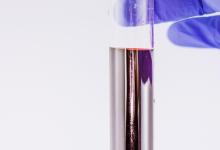Higher Lupus Disease Activity in First Year Postpartum Save

Most women with systemic lupus erythematosus (SLE) have no or little disease activity during pregnancy, but experience greater disease activity or overt flares during the first year postpartum, a Norwegian study has found.
During each trimester of pregnancy and at 6 weeks after birth, researchers assessed SLE disease activity using the validated Lupus Activity Index in Pregnancy (LAI-P), which scores disease activity on a continuous scale from 0-2.6, with zero indicating no disease activity and 2 and above high disease activity. At 6 and 12 months postpartum, they used the modified LAI (m-LAI), which uses mostly the same items as the LAI-P and is graded similarly.
More than half (51.6%) of the scores were equal to zero (remission) and only 6.3% of the scores exceeded 0.5 (moderate disease activity), reported Carina Götestam Skorpen, MD, of Trondheim University Hospital, Norway, and colleagues. More than half (51.4%) of the patients had no disease activity in the first trimester with a LAI-P score of zero. Only one registered disease activity score reached a value of 2, indicating high disease activity.
But the data showed a statistically significant (P=0.035) and clinically relevant change in disease activity over time, with increased activity at 6 and 12 months postpartum compared with the third trimester and 6 weeks postpartum, the researchers reported in Arthritis Care & Research.
"As clinicians, we know that pregnant women with SLE are considered high risk due to increased risk of miscarriage, stillbirth, preeclampsia, growth restriction and preterm birth," Skorpen told MedPage Today.
"Accordingly, we follow up these women ahead of and during pregnancy, to control their disease and other risk factors. This study shows that it is of great importance to continue the tight follow-up as long as a year after birth, in order to avoid flare and potential permanent damage."
The study included 145 pregnancies in 128 women with SLE resulting in live births. Some women were carrying twins and some participated twice.
These women were enrolled in RevNatus, a nationwide Norwegian multicenter prospective observational register of women with an inflammatory rheumatic disease planning pregnancy or after conception.
The mean age of the study subjects was 30.4 years, and the mean duration of their disease was 8 years. Disease manifestations at study inclusion mostly involved skin, joint and hematological features, followed by active kidney disease. Neurologic, pulmonary and cardiac disease were rarely reported.
The only immunosuppressants used in the cohort were hydroxychloroquine, azathioprine, and prednisolone.
When adjusting for use of hydroxychloroquine at each visit, the longitudinal change in disease activity was preserved (P=0.012) with a nonsignificant tendency towards lower disease activity when using this drug (OR 0.78; P=0.47).
"Hydroxychloroquine has been shown to protect against increasing disease activity and ideally all women with SLE planning pregnancy should be treated with hydroxychloroquine to avoid potential flares," the investigators said in their report.
The change in disease activity was despite a slight increase in the use of prednisolone. There was a statistically significant increased risk of higher disease activity when using prednisolone (OR 3.10; P<0.001).
"Prednisolone is the most common drug used to control disease flares, and therefore the finding that prednisolone use was associated with a risk of higher disease activity may be a case of confounding by indication," Skorpen and colleagues wrote.
There was also a statistically significant increased risk of higher disease activity when using azathioprine (OR 2.2; P=0.022).
A limitation of the study was lack of information on disease activity before conception. Another concern was that pregnant women with a disease in remission might not have been recruited into the register, resulting in an under-reporting of no or low disease activity. On the other hand, women with high disease activity or very severe prior organ involvement might choose not to become pregnant and therefore not be included in RevNatus.
"It's reasonable to believe that a tight follow-up of disease and pregnancy together with the counseling of women planning pregnancy, when included in a register such as RevNatus, contributes to the observed low disease activity," said Skorpen.







If you are a health practitioner, you may Login/Register to comment.
Due to the nature of these comment forums, only health practitioners are allowed to comment at this time.